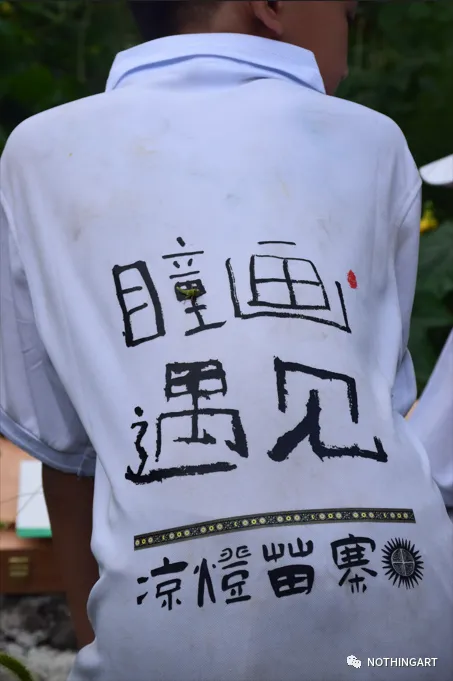In Mountain River Town, there is a small market on the third day of every lunar month and a large one on the eighth.
August 4th happened to be a big market day, so the city kids and the children from Liangdeng Village woke up at 6 am to head out!

Bathed in the morning sun at six o’clock, we set off for the market.
The bus carried us through narrow alleys, and as soon as we got off, we could hear vendors calling out. The main street was bustling with people, and the market was lively, exuding an atmosphere of vitality.
On our way to the market, we encountered locals coming to trade.
On designated days, people from within several or dozens of kilometers gather to buy and sell freely—this is what a market is.
This is the most down-to-earth place in any location, filled with the hard work and daily necessities of each household, fruits, vegetables, and more. It hides many stories of the Miao people and provides us with the most direct and authentic way to understand the place.
Under the morning light, having breakfast at a roadside stall at the market.

A local dentist working on teeth at his stall along the street.
The goods on display were varied, including unfamiliar curiosities and unnamed medicinal herbs. Elderly people wearing hats and headscarves and dressed in colorful Miao costumes traded essentials and seeds.

Locals wearing Miao costumes.
Costumes are specific symbols that convey cultural information, recording the history and beliefs of a people and carrying the rich cultural heritage of a nation.
Throughout history, the Miao people have been a migratory group. Despite thousands of years of migration and upheaval, they have left no written records. However, Miao women have used their skilled hands to create beautiful embroidered garments, engraving the traces of their people’s continuous development and inheritance. They use needles as pens and threads as ink to record mountains, rivers, the sun, birds, and beasts they encountered during their migrations, creating a rich and romantic “wordless history book.”
Mostly seen wearing Miao costumes are the local elders.
The sun pattern and the meandering pattern on this year’s activity uniforms are totems from Miao clothing.
The sun pattern symbolizes dignity, courage, creativity, and self. Due to the rising and setting of the sun, it also represents rebirth and immortality.
The meandering pattern symbolizes health, wealth, continuity, and auspiciousness.

We hope the children see a different world and that through them, we see a world full of courage, creativity, and self.
At lunchtime, in the “stone house” where we rested, Aunt Ma, who according to Uncle Wu has always been outspoken, sang a melodious Miao song in her loud voice.
Aunt Ma said that learning and passing on the Miao language isn’t easy because they don’t have a written script.
Seeing our team uniforms, Aunt Ma asked, “What does ‘Pure View’ mean?” and she managed to make all of us laugh.
What is Pure View? Our original intention:
- To use art as a bridge for village children and volunteers to discover a different world through each other’s eyes and see a better version of themselves.
- To inspire and cultivate observation skills, learn to find beauty in overlooked details of everyday scenery, promote folk and traditional culture, strengthen expression and presentation abilities, attract more like-minded individuals, encourage adults to return home to start businesses, and reduce the number of left-behind children.
- To organize exhibitions for the children, broaden their horizons, feel their own creativity, boost their confidence, and ensure that every child feels loved and valued, recognizing that talent is equal. Art exhibitions not only affirm the children’s efforts but also inspire them to strive forward and love life.
- To give children more connections with others and nature, reducing loneliness, stress, and excessive modern entertainment, allowing them to reflect on themselves while helping others and contribute their part to improving the world.

Teacher Li Jie leading and guiding the children in plein air painting.
The plein air painting scene at the market.









